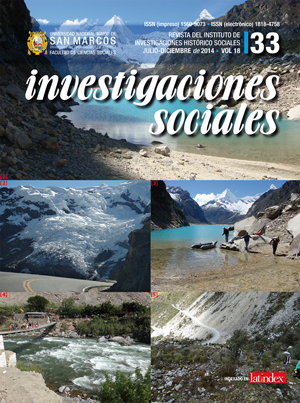The origins of agriculture: new paradigms
DOI:
https://doi.org/10.15381/is.v18i33.10979Keywords:
Domestication, Neolithic, sedentariosmo, agro-ecology, plant sciences, paleoecology, tubers, cucurbits, archaeozoology, cultural ecology.Abstract
The agricultural revolution is the first major event held by men, eight thousand years before the present, in five centers of domestication and adjacent areas, located in the Middle East, India, China, Mesoamerica and the Central Andes. The domestication of plants and animals, caused substantial changes in the behavior of sedentary societies, the new economy and technology innovation brought with major social and political transformations. The food producing economy profoundly changed human mentality. In every village, in every village, surplus production led to the emergence of specialists and complexity of society as a whole. How happened? Many specialists study the causes of great transformation, some refer to as the «broad spectrum revolution»; others claim it is the result of awareness of the benefits provided by the insurance resources; however, others consider as evidence of livelihood strategies and population pressure. One detailed chronological list of the main plants and animals domesticated in Asia, Mesoamerica and the Central Andes is presented.Downloads
Published
Issue
Section
License
Copyright (c) 2014 Hernán Amat Olazával

This work is licensed under a Creative Commons Attribution-NonCommercial-ShareAlike 4.0 International License.
AUTHORS RETAIN THEIR RIGHTS:
a. Authors retain their trade mark rights and patent, and also on any process or procedure described in the article.
b. Authors retain their right to share, copy, distribute, perform and publicly communicate their article (eg, to place their article in an institutional repository or publish it in a book), with an acknowledgment of its initial publication in Investigaciones Sociales.
c. Authors retain theirs right to make a subsequent publication of their work, to use the article or any part thereof (eg a compilation of his papers, lecture notes, thesis, or a book), always indicating the source of publication (the originator of the work, journal, volume, number and date).






